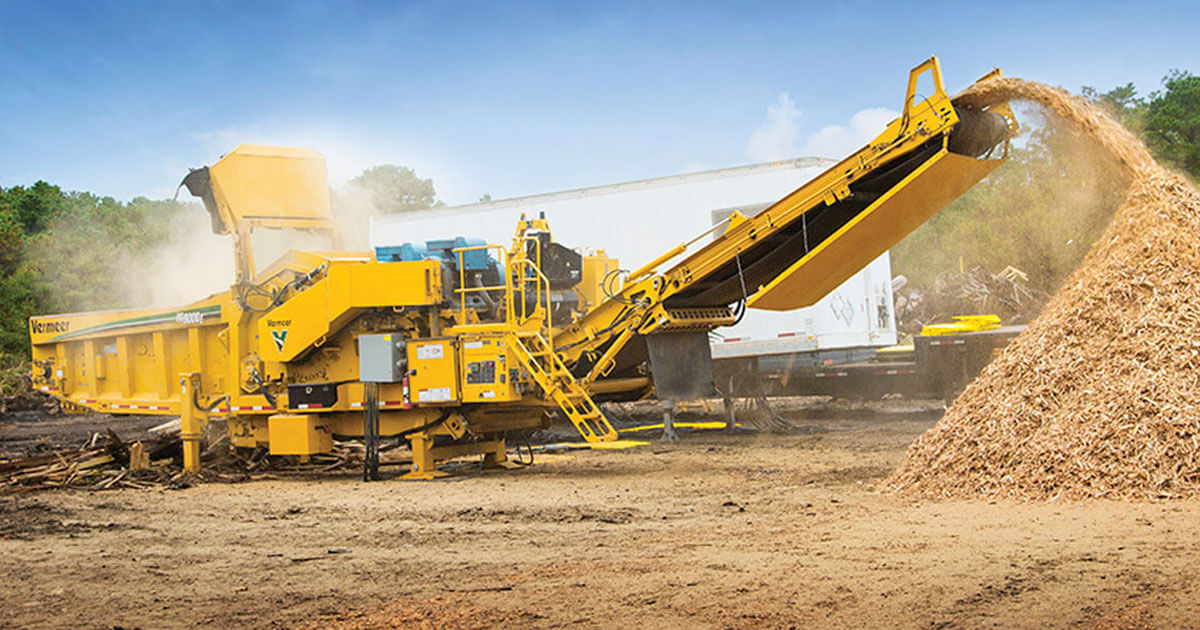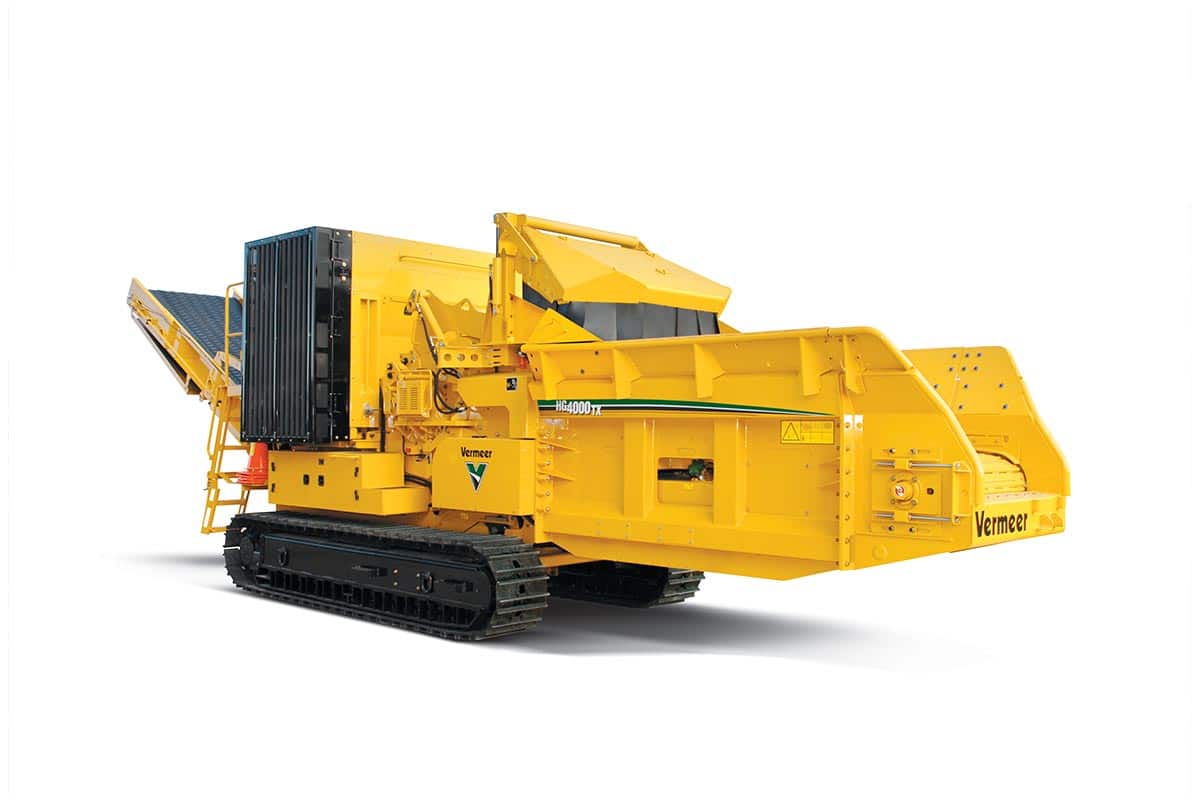Efficient Biomass Grinding Solutions with Horizontal Grinder
Efficient Biomass Grinding Solutions with Horizontal Grinder
Blog Article
Achieve Price Cost Savings and Greater Output With a Straight Grinder for Reusing
In today's fast-paced world, where efficiency and cost-effectiveness are extremely important, companies are constantly looking for ingenious services to boost their operations. One such option that has gained traction in the reusing market is the usage of horizontal mills. These effective equipments have the potential to accomplish significant expense savings and increase outcome, making them a game-changer for reusing facilities. However just what are the advantages of utilizing a horizontal mill? What vital features should you seek when choosing one? And exactly how can you optimize expense financial savings with this equipment? In this discussion, we will certainly explore these inquiries and explore real-life instance researches that highlight the excellent results attained by adopting a horizontal grinder. Obtain prepared to uncover just how this technology can transform your reusing procedures and leave you starving for more.
Benefits of Making Use Of a Straight Grinder
Utilizing a straight grinder provides numerous benefits in the realm of recycling and waste management. Whether it is timber waste, building particles, or also asphalt tiles, a straight grinder can efficiently grind these products into smaller sized, much more manageable items.
One more advantage of making use of a straight grinder is its high manufacturing capability. These machines are created to handle large quantities of material, enabling faster handling times and enhanced outcome. This is particularly advantageous for reusing facilities and waste monitoring firms that require to refine big amounts of waste on an everyday basis. By taking full advantage of manufacturing capability, a straight grinder can enhance functional efficiency and eventually minimize expenses.

In addition, horizontal grinders use the benefit of generating a consistent final result. With adjustable screens and blades, operators can conveniently control the size and top quality of the processed material. This uniformity is essential for sectors that depend on recycled products, such as biomass power manufacturing or compost manufacturing. By creating a consistent output, horizontal grinders guarantee that the recycled products fulfill the desired specs and can be properly made use of in different applications.
Key Features of a Horizontal Grinder
A straight mill is equipped with several essential functions that improve its performance and performance in waste monitoring and reusing procedures. Among the major features is the effective engine that drives the mill. These engines are generally diesel-powered and offer the needed horse power to shred and grind various products successfully. The engine's high torque permits the grinder to deal with challenging products such as stumps, logs, and construction waste effortlessly.
An additional important feature of a straight mill is the big feed opening. This allows for the reliable and continuous feeding of large materials right into the grinder. The vast opening lowers the requirement for manual work in arranging and pre-processing the waste, saving time and increasing efficiency.
In addition, horizontal mills are developed with adjustable screens or grates. These screens identify the size of the end product by regulating the fragment size of the shredded material. The capability to change the screen permits drivers to produce various dimensions of ended up items, catering to particular recycling or waste administration needs.
In addition, horizontal mills frequently come furnished with a magnetic separator. This feature aids in the elimination of ferrous products from the waste stream, making sure that the final item is devoid of impurities. The magnetic separator improves both the top quality and marketability of the recycled materials.
How to Select the Right Horizontal Grinder
Choosing the ideal straight mill requires careful consideration of numerous variables to make certain optimal performance and cost-effectiveness in waste monitoring and reusing procedures. The first element to consider is the dimension and kind of material to be processed. Different grinders are made to handle specific products, such as wood, green waste, or construction debris. It is important to select a grinder that can successfully handle the designated feedstock without causing extreme damage.
Another variable to take into consideration is the preferred output dimension (horizontal grinder). Mills feature different display dimensions that identify the last item dimension. It is very important to choose a mill that can generate the wanted fragment size for the designated application, whether it is for producing mulch, biomass fuel, or animal bed linens
The source of power is likewise an essential consideration. Horizontal grinders can be powered by diesel motor, electric motors, or hybrid systems. The choice of source of power depends upon aspects such as availability of electrical power, expense of gas, and ecological laws.
Furthermore, the capacity and throughput of the mill need to be considered. The size of the procedure and the anticipated quantity of material to be refined will determine the required ability of the maker.
Lastly, it is important to consider the general durability and integrity of the grinder. Seek a reliable producer with a record of creating premium equipment that can endure the demands of the reusing market.
Tips for Maximizing Price Financial Savings With a Straight Mill
To optimize expense savings and functional efficiency with a straight grinder, it is crucial to apply effective techniques that make the most of productivity and lessen expenses. Here are some tips to aid you accomplish these goals:
Regular Maintenance: Conduct routine assessments and upkeep on your grinder to guarantee it is running at peak performance. This will certainly aid avoid failures and expensive repairs, along with expand the life expectancy of click over here your equipment.
Reliable Product Handling: Appropriately feeding the grinder with the best amount of product is necessary for attaining price financial savings. Overloading the mill can result in increased fuel usage and damage on the maker. On the other hand, underloading can cause minimized performance.
Optimal Grinding Methods: Trying out various grinding strategies to discover one of the most efficient approach for your specific materials. Readjusting the grinder's setups, such as rotor rate click here to read and screen dimension, can aid accomplish the preferred fragment size while lessening energy consumption.
Correct Disposal of Residual Product: Dispose of the residual material from the grinding process in a economical and eco-friendly fashion. Think about recycling or repurposing the byproducts to reduce waste and potentially generate extra profits.
Study: Real-Life Instances of Price Cost Savings and Greater Output With a Straight Mill
One such instance study involves a waste administration company that used a straight mill to process timber waste. Additionally, the horizontal mill increased their outcome by permitting them to refine bigger quantities of timber waste in a shorter amount of time.
An additional case study includes a construction business that made use of a straight mill to reuse concrete and asphalt waste from their demolition tasks - horizontal grinder. By grinding the waste material into multiple-use accumulation, they were able to minimize disposal prices and acquisition less virgin products for their future jobs. This not just resulted in substantial expense savings yet additionally decreased their ecological influence
Furthermore, a reusing facility that specialized in handling organic waste utilized a straight mill to grind and compost lawn waste. This allowed them to increase their processing capacity and generate higher-quality garden compost in a shorter amount of time. Because of this, they had the ability to satisfy the growing demand for their compost products while achieving considerable expense financial savings.
These real-life examples show the performance and benefits of using a horizontal grinder look at this now for reusing procedures. The price savings and enhanced output obtained by these business highlight the capacity of this modern technology in improving performance and sustainability in numerous sectors.
Final Thought
In verdict, making use of a straight mill for reusing offers many benefits such as cost financial savings and greater result. Real-life case studies showcase the efficiency of straight grinders in attaining significant price savings and increased outcome.

Report this page